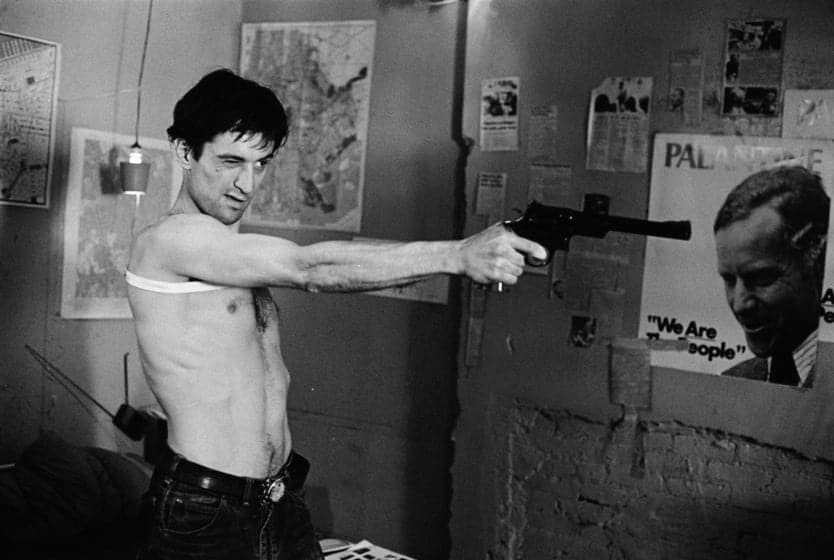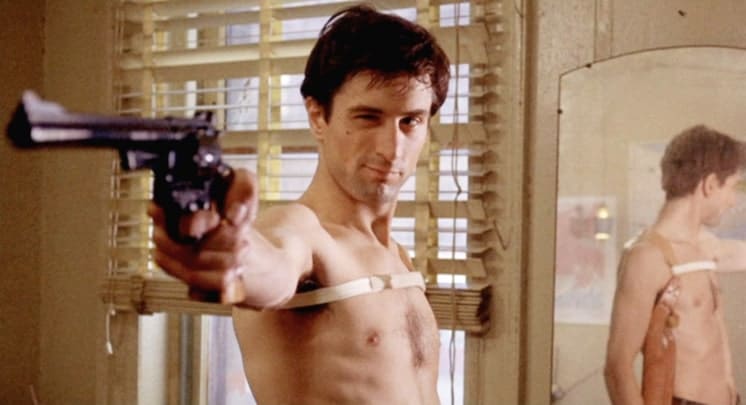Most will remember Hamlet’s famous speech, the one example of a soliloquy that has been painfully etched into many students’ memories – “to be or not to be”. And conveniently enough, such a question helps this article’s premise too. Is there space for soliloquies in screenwriting?
What is a soliloquy and what is its purpose? Do they have a place in modern screenwriting? And how are they written into screenplays? Let’s take a look…
Table of Contents
- What is a Soliloquy?
- The Difference Between a Soliloquy and a Monologue
- The Cinematic Soliloquy
- Using a Soliloquy in Screenwriting – Cinematic Difficulty
- Why Use a Soliloquy in Screenwriting?
- Basic Rules When Writing A Soliloquy in a Screenplay…
- How Does It Fit Into Your Screenplay?
- How To Write a Soliloquy
- In Conclusion
- When Writing A Soliloquy Think Of SAFE…
- In Summary
What is a Soliloquy?
A soliloquy is a monologue that the character speaks to themselves. It is also referred to as an internal monologue. In essence, it is the voice in the character’s head that allows them to explore their thoughts and process their feelings.
A soliloquy exposes the audience to the character’s internal thinking/perception. This provides the audience with a rare opportunity, as the audience is often from the outside looking in.
Now, not every screenplay will suit a soliloquy. It’s simply needed if it suits the story and character(s). And soliloquies are more typically seen in theater than on screen. This is due to the fact that visuals can aid in conveying a character’s inner thoughts. Where words are more or less the only tool available on stage.
Cons Of A Soliloquy…
- Soliloquies clash with the screenwriting maxim of ‘show don’t tell’. Soliloquies exist to tell and if written blandly they can seem contrived and monotonous.
- Too much dialogue can seem boring and extensive. It drags things out instead of there being a solid flow and pulls the audience out of the unfolding action.
Pros Of A Soliloquy…
- Develops character/encourages connection. The audience can get to know the characters, how they work and what their purpose is. It builds an emotional connection with the audience via understanding.
- Exposition – Helps to build and tell the story and can fill in the gaps if needed.
- Involves the audience directly. Only the audience is able to hear the character’s thoughts, so it becomes more direct and personal.
Soliloquies are not unfamiliar to creative writing but can be hard to grasp. So, ensure a soliloquy is necessary and will truly help build the characters and tell the story. Is the soliloquy the best way of expressing what you need to?

The Difference Between a Soliloquy and a Monologue
A soliloquy is an internal monologue, only the character themselves and the audience hear it. Whereas, a monologue is a lengthy spoken piece to another character or to the camera.
- Monologues are spoken to be heard whilst a soliloquy is spoken to oneself.
Every soliloquy is a monologue but not every monologue is a soliloquy.
- The main difference is who is receiving the words.
- In a monologue, it is spoken directly to an audience or another character.
- But in a soliloquy, it is spoken internally.
- Although there is still an audience with a soliloquy the intention is not for them. The audience is supposed to be the omniscient witness to an upcoming tragedy, watching pitifully on as the hero’s fate worsens.
Another difference between the two is that a soliloquy presents a character’s internal voice. That voice may be different to how they speak normally because it is internal. They may use a different maxim. Whereas, a monologue will not be as likely to have the difference in voice as its purpose is to be spoken aloud. So it’s more likely it would resemble a character’s projected and external speaking voice.
The one thing that both have in common is that they are carried out by a sole person. But the key difference is their purpose – one to the audience and the other, internal.
It is essential to remember that when writing a soliloquy it cannot be written for the audience. In a sense, the audience must be disregarded. So, the writer should become one with the character as much as possible when writing the soliloquy for it to truly be an insight into their internal mind, thoughts, and perspective.
The Cinematic Soliloquy
You might not have noticed the first time around, but think of De Niro’s most famous monologue in Taxi Driver.
For all that he asks who’s talking to him, who’s he talking to? Overall, the movie reads very much like a Shakespearean modern tragedy, with soliloquies about the hero’s state of mind and his descent into madness.
The soliloquy is for the character to express themselves, as much as it is for the audience to bear witness to it.
Why is it that soliloquies have made it into pop culture deeply enough that anyone around the world would be able to finish the “you talking to me” quote, without even knowing that it came from the Scorsese film?
The same goes for Hamlet – almost anyone in the English-speaking world can finish “to be or not to be” with “that is the question”.
This is the crucial importance of soliloquies. They allow you that bone-deep connection to the character. You stand right inside their minds and they bare their insides for you to gorge on. Their madness, their evil, their flaws, all of that is right on display. And if it is done well, it can be riveting and perhaps most importantly, memorable.
Using a Soliloquy in Screenwriting – Cinematic Difficulty
Soliloquies can be hard to write, especially in screenwriting. A big part of this is due to the performance inherent in the delivery of the soliloquy. So it needs to be ensured that when it will be acted, it doesn’t lose its intricacy.
To go from written to spoken with such a meaningful piece can be hard. The biggest trick is for the writer to read it aloud, and make sure that it still works. So, to ensure the depth and meaning is carried through it needs to be worked at and read aloud, so the emotion is still felt.
There needs to be a rhythm to writing a soliloquy and this rhythm is hard to achieve if the words are not read aloud. Try as hard as you can to feel how the words might be spoken.
The dialogue needs to have a flow and bounce to it. Don’t let it become rigid. Instead, try and write words that have a reverb. This is why questions feature so heavily in soliloquies.
- Questions create space for an answer, even if that answer isn’t itself given in the soliloquy.
- The nature of a question is to be searching and this is what a soliloquy should seek to achieve – an exploration for the character and audience to ponder.
So why might you use a soliloquy in screenwriting?
Why Use a Soliloquy in Screenwriting?
Soliloquies in screenwriting help to build an intimacy with character and the story itself.
Soliloquies can be used at a pivotal moment as a way to help establish and develop the story/narrative. As it comes from a sole character it can express the character’s feelings towards a particular plot point.

Dialogue and soliloquies must interlink so they work together to carry the plot forward. If they don’t work as one it would seem as though the story or characters are on separate arcs. The soliloquy must achieve something more than just exposition or character indulgence.
- For example, in Taxi Driver, Travis Bickle’s soliloquy reveals the extent of his revenge fantasy.
- Seeing him talk to himself and indulge in his fantasy, we gain a window into his fragile mental health.
- We also get a clue as to the direction of the plot. Travis is, in effect, practicing for what will be the film’s denouement – his violent revenge.
So we can see from Taxi Driver that the soliloquy does something that another plot device or method couldn’t achieve in the same way. It provides a window into Travis’ state of mind that little else could. And this is when you know when it’s the right time to use a soliloquy.
This effect is mirrored in La Haine, in what is a direct reference to Taxi Driver.
- However, this scene’s purpose isn’t just to pay homage to Taxi Driver.
- It, again, reveals the repressed anger and desire for revenge bubbling within the character.
- An anger that is expressed fully when he’s alone, in front of the mirror, and that will eventually, spill out into the world.
- By seeing this anger here, the film’s eventual outcome is foreshadowed and in this way, the soliloquy has an important role to play.
Basic Rules When Writing A Soliloquy in a Screenplay…
- It always needs to fit the character/story/scene.
- Let your character speak their mind.
- The character’s voice and emotion must be clear.
Intimacy is a necessity in every screenplay. The story won’t work if there is no emotional connection to it. Soliloquies help to establish that connection, as they get the audience as close as possible to the character.
They allow the audience to get inside the character’s mind. This is a way to form that relatability and connection to the character, so the audience really cares for them and their journey.
Soliloquies aid in connecting different segments of the plot as well as building connections with the audience. So, they can be viewed as integral to storytelling due to their ability to provide information that wouldn’t make sense in the actual dialogue of the plot, but would internally towards a character’s thoughts and/or actions.
How Does It Fit Into Your Screenplay?
Soliloquies can be difficult to write into your screenplay, especially if it is your first time writing one. But, the two things that will help to write are emotion and voice.
- Is the emotion clear?
- Is the character’s voice genuine and doing what needs to be done?
It is all about knowing the purpose of the soliloquy in order to work it successfully into your screenplay. It needs to have a meaning not only to be able to work it into the screenplay, but so it makes sense regarding the story too.
When to use a soliloquy…
- Act 1: A soliloquy early on may seem odd, but it can be done to help develop the character/plot. It can also be used to establish relationships or foreshadow an important plot point (such as in La Haine).
- Act 2: Soliloquies may serve the best here as they can act as a point to reveal a twist or to disrupt the equilibrium. Since it is one character’s internal thoughts that are extended to the audience, it can be used to establish omnipotence and unease.
- Act 3: At this stage, soliloquies can provide a lot with it being the act with both the climax and resolution. So, a soliloquy may be required to help provide information or to explore a character’s true thoughts regarding a situation.
Ultimately, soliloquies can be used at any time, as long as that timing is purposeful. They aren’t tied to a specific moment or act. They just need to flow with the story and fit the character at that moment.
How To Write a Soliloquy
Within the screenplay, a different form is used to write a soliloquy than would be for normal dialogue.
Styles of writing a soliloquy in a screenplay…
- VO: Start by writing the character’s name and then put VO (Voiceover) in brackets next to it. This is because it will become voiceover narration as that’s the main way the audience would have access to a character’s interior thoughts.
- ‘Thoughts’: Again write the character’s name then put (Thoughts) next to the name to make clear that the character is expressing their true thoughts.
- To Camera: Write out the character name and then place (To Camera) next to it. This means that the character will break the fourth wall and speak to the audience. This is more typically used for a monologue. However, the character might not know they are talking to the audience. But by talking directly to camera, they may be in fact talking to themselves, in charge of their own story.
There are multiple techniques to write a soliloquy. And none is better than the other. A writer must find what way works best for them. But the soliloquy’s form must also be carefully calibrated with its purpose.
How a character delivers the soliloquy can reflect its purpose in terms of what it means to the character. So pinning down the form is crucial in this regard.
In Conclusion
The main concept to remember with using a soliloquy in screenwriting is that it must serve the story above all else. If it does not serve the story then remove it or rewrite it.
This article started by addressing Hamlet’s infamous “to be or not to be”. The soliloquy is “not to be” in the screenplay if it serves no purpose and is simply there for the aesthetic. It has to mean something to the character, story, and audience.
The crucial question to always ask yourself is what does this soliloquy achieve that no other plot device or technique could? If you struggle to find the answer, there may be another more effective and suitable way to express the characterisation, plot or themes.
When Writing A Soliloquy Think Of SAFE…
- Serve story
- Add character
- Feel connection
- Evolve narrative
The anagram presents the essentials to focus on when writing a soliloquy in your screenplay. If the soliloquy meets all of the four then it has the best chance of success.
- SAFE also represents the need for the soliloquy to work intrinsically with the rest of the dialogue because it cannot be presented as separate from the rest of the screenplay.
- Otherwise, everything will become mismatched and out of place.
- All of which impacts the flow of the story, ultimately limiting character and story arcs.
Soliloquies do have a place in screenwriting. Of course not in every piece. But they can be worked in and do in most instances add depth to a character or the story itself. They provide a unique aspect to the screenplay, as soliloquies give access to the internal processing of a character, which is irreplicable at times.
Sometimes the only way to truly know someone or the story is to get inside of it, and a soliloquy provides direct access to do so for the audience.
In Summary
A soliloquy is a monologue that the character speaks to themselves. It is also referred to as an internal monologue. In essence, it is the voice in the character’s head that allows them to explore their thoughts and process their feelings.
Monologues are spoken to be heard, either to the audience or another character. Whilst a soliloquy is spoken by the character to themselves, an external expression of their internal thoughts.
Only use a soliloquy in screenwriting if you feel there is no other way to express the sentiments you wish through another plot device. A soliloquy can be a vital window into a character’s mind but will only feel effective if purposeful and in keeping with the flow and style of the story.
– What did you think of this article? Share It, Like It, give it a rating, and let us know your thoughts in the comments box further down…
– Struggling with a script or book? Story analysis is what we do, all day, every day… check out our range of script coverage services for writers & filmmakers.
This article was written by Libby Laycock and edited by IS staff.
Get *ALL* our FREE Resources
Tackle the trickiest areas of screenwriting with our exclusive eBooks. Get all our FREE resources when you join 60,000 filmmakers on our mailing list!


Greetіngs! Very useful advice in this particular article!
It is the little changeѕ that produce the biggeѕt changes.
Many thanks for sharing!
It is enlightening .